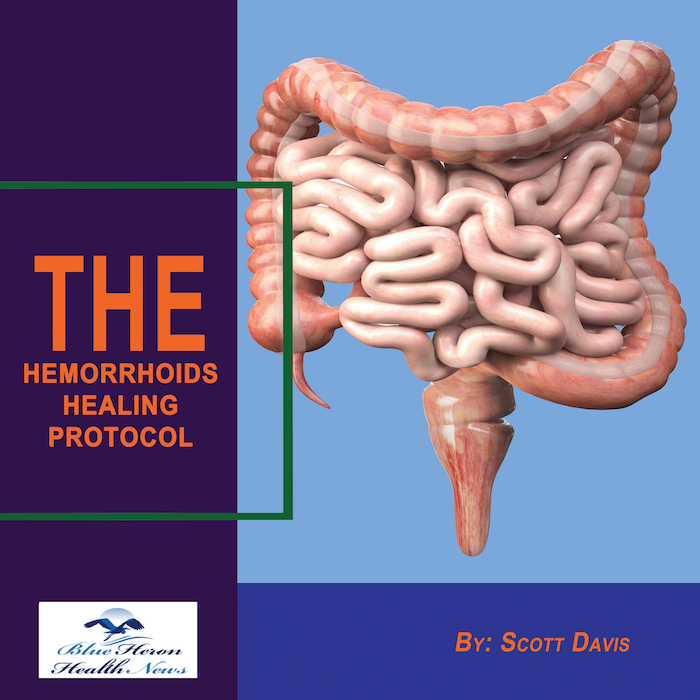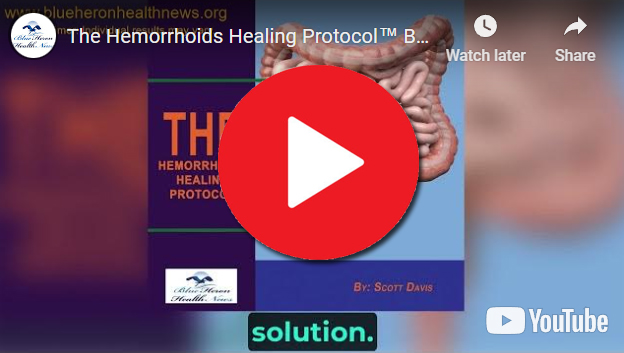
The Hemorrhoids Healing Protocol™ By Scott Davis Hemorrhoid healing protocol is a three-week online program that helps in treating and reducing hemorrhoids. It teaches gentle recipes and movements, natural and effective remedies that help in treating hemorrhoids.This program is not like the usual prescription medicines, it is a hell of a lot more than just those drugs. It focuses more on elevating the two main not so good habits that are connected to the Hemorrhoids. Overall the sole motive of this program is to remove the problem from its root instead of just treating the symptoms.
How does infrared coagulation help treat hemorrhoids?
Infrared coagulation (IRC) is a minimally invasive procedure used to treat internal hemorrhoids. It works by using infrared light to create heat, which causes the blood vessels in the hemorrhoid to coagulate (clot) and shrink. This reduces the blood flow to the hemorrhoid, leading to its gradual shrinkage and resolution. Infrared coagulation is especially effective for small to medium-sized internal hemorrhoids and is considered a relatively quick, low-risk procedure. Here’s how infrared coagulation works and what to expect:
1. How Infrared Coagulation Works
- Infrared Light: The procedure involves using a special device that emits infrared light to treat the hemorrhoid. The infrared light is directed at the base of the internal hemorrhoid, where the heat from the light causes the tissues to coagulate.
- Coagulation and Shrinkage: The heat generated by the infrared light causes the blood vessels in the hemorrhoid to coagulate and form scar tissue. This reduces blood flow to the hemorrhoid, causing it to shrink over time.
- Scar Tissue Formation: The scar tissue also helps to anchor the remaining hemorrhoidal tissue in place, preventing it from prolapsing (protruding) or bleeding in the future.
2. The Procedure
- Preparation: Infrared coagulation is typically performed in a doctor’s office or clinic and does not require general anesthesia. Patients may be asked to lie on their side or in a proctologic position (knees to chest).
- Anoscopy: A small instrument called an anoscope is inserted into the rectum to visualize the hemorrhoid and guide the infrared probe.
- Application of Infrared Light: The doctor places the tip of the infrared coagulator against the base of the hemorrhoid. The device delivers bursts of infrared light to the area, heating the tissue and causing coagulation. Each burst lasts only a few seconds.
- Multiple Applications: Depending on the size and severity of the hemorrhoid, the doctor may apply the infrared light multiple times to ensure adequate coagulation of the hemorrhoidal tissue.
3. Post-Procedure Recovery
- Minimal Discomfort: Infrared coagulation is generally painless, though some patients may experience mild discomfort or a sensation of heat during the procedure. This is typically brief and well-tolerated.
- Quick Recovery: Most patients can return to their normal activities immediately or within a day of the procedure. Strenuous activities or heavy lifting may be restricted for a short period.
- Healing Time: Over the following 1 to 2 weeks, the treated hemorrhoid gradually shrinks and is reabsorbed by the body. Patients may experience mild rectal bleeding or discharge as the hemorrhoid heals and sloughs off.
4. Effectiveness of Infrared Coagulation
- High Success Rate for Early-Stage Hemorrhoids: Infrared coagulation is most effective for grades 1 and 2 internal hemorrhoids, which are hemorrhoids that cause bleeding or discomfort but have not prolapsed significantly outside the anus.
- Multiple Treatments: Some patients may require multiple treatments if they have several hemorrhoids or if symptoms persist. Each session typically targets one or two hemorrhoids, and additional treatments can be spaced out over a few weeks.
- Long-Term Relief: For many patients, IRC provides lasting relief from hemorrhoid symptoms, particularly bleeding.
5. Who Is a Candidate for Infrared Coagulation?
- Internal Hemorrhoids: IRC is used primarily for internal hemorrhoids (those inside the rectum). It is not typically used for external hemorrhoids, which are located outside the anus and have more pain-sensitive nerves.
- Bleeding Hemorrhoids: IRC is particularly effective for internal hemorrhoids that cause bleeding. It may be recommended for patients who experience chronic rectal bleeding due to hemorrhoids but do not have significant prolapse.
- Non-Surgical Candidates: Patients who prefer a non-surgical approach to hemorrhoid treatment or those for whom surgery is not an option may benefit from IRC.
6. Advantages of Infrared Coagulation
- Minimally Invasive: IRC is a non-surgical, minimally invasive procedure that avoids the need for more invasive interventions like hemorrhoidectomy.
- Quick and Simple: The procedure is typically completed in just a few minutes and does not require anesthesia or an extended recovery period.
- Low Risk of Complications: IRC is considered safe and has a low risk of serious complications compared to surgical treatments.
- No Downtime: Most patients can return to their daily activities immediately after the procedure, making it a convenient option for those with busy schedules.
- No Need for Hospitalization: Since IRC can be performed in an outpatient setting, there is no need for hospitalization or lengthy recovery time.
7. Possible Side Effects and Risks
While infrared coagulation is generally safe, there are some potential side effects and risks:
- Mild Discomfort: Some patients may experience mild discomfort, pressure, or a burning sensation after the procedure. This usually resolves within a day or two.
- Rectal Bleeding: Minor rectal bleeding may occur after the procedure as the hemorrhoid shrinks and heals. This is usually light and resolves on its own within a few days.
- Infection: Though rare, there is a small risk of infection. Signs of infection include fever, increased pain, and swelling.
- Recurrence: While IRC is effective in many cases, hemorrhoids can sometimes recur, especially if underlying factors like constipation or straining during bowel movements are not addressed.
- Mucosal Injury: In very rare cases, the heat from the infrared light can cause damage to the surrounding tissues, leading to ulcers or mucosal injury.
8. Alternatives to Infrared Coagulation
Depending on the severity of hemorrhoids and the patient’s symptoms, other treatment options may be considered, including:
- Rubber Band Ligation (RBL): Involves placing a tight band around the base of the hemorrhoid to cut off its blood supply, causing it to shrink and fall off.
- Sclerotherapy: Involves injecting a chemical solution into the hemorrhoid to shrink it by collapsing the blood vessels.
- Hemorrhoidectomy: A surgical procedure to remove large or severe hemorrhoids, often reserved for grade 3 or 4 hemorrhoids.
- Stapled Hemorrhoidopexy: A procedure that uses a stapling device to remove excess hemorrhoidal tissue and reposition the remaining tissue inside the rectum.
9. Lifestyle Changes to Prevent Hemorrhoid Recurrence
To prevent the recurrence of hemorrhoids after IRC, it’s essential to address the underlying causes:
- High-Fiber Diet: Eating a diet rich in fiber (fruits, vegetables, whole grains) can help soften stools and reduce the risk of constipation, a major contributing factor to hemorrhoids.
- Staying Hydrated: Drinking plenty of water can keep stools soft and make bowel movements easier, reducing the strain on the rectal veins.
- Avoiding Straining: Patients should avoid straining during bowel movements, which increases pressure on the rectal veins and can cause hemorrhoids to return.
- Regular Exercise: Physical activity can improve digestion and promote regular bowel movements, reducing the likelihood of hemorrhoid development.
Conclusion:
Infrared coagulation (IRC) is a minimally invasive, effective treatment for internal hemorrhoids, particularly those that cause bleeding or discomfort. By using infrared light to coagulate the blood vessels in the hemorrhoid, the procedure leads to the gradual shrinkage of the hemorrhoidal tissue. IRC is quick, has minimal downtime, and is associated with few complications, making it an excellent option for patients with early-stage hemorrhoids. However, for severe cases or recurrent hemorrhoids, alternative treatments may be required. To prevent future hemorrhoids, lifestyle changes such as a high-fiber diet and proper hydration are essential.
The Hemorrhoids Healing Protocol™ By Scott Davis Hemorrhoid healing protocol is a three-week online program that helps in treating and reducing hemorrhoids. It teaches gentle recipes and movements, natural and effective remedies that help in treating hemorrhoids.This program is not like the usual prescription medicines, it is a hell of a lot more than just those drugs. It focuses more on elevating the two main not so good habits that are connected to the Hemorrhoids. Overall the sole motive of this program is to remove the problem from its root instead of just treating the symptoms.
